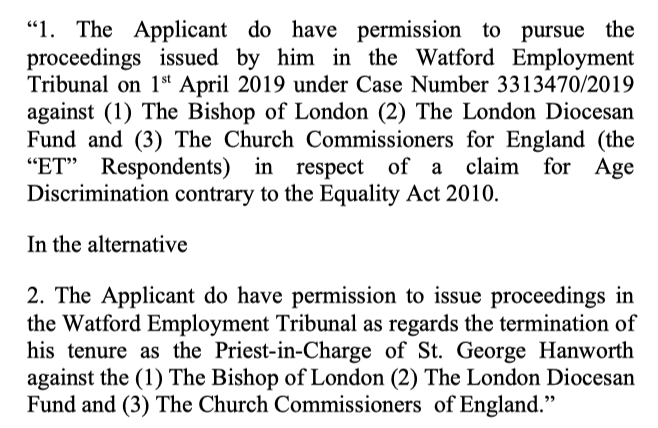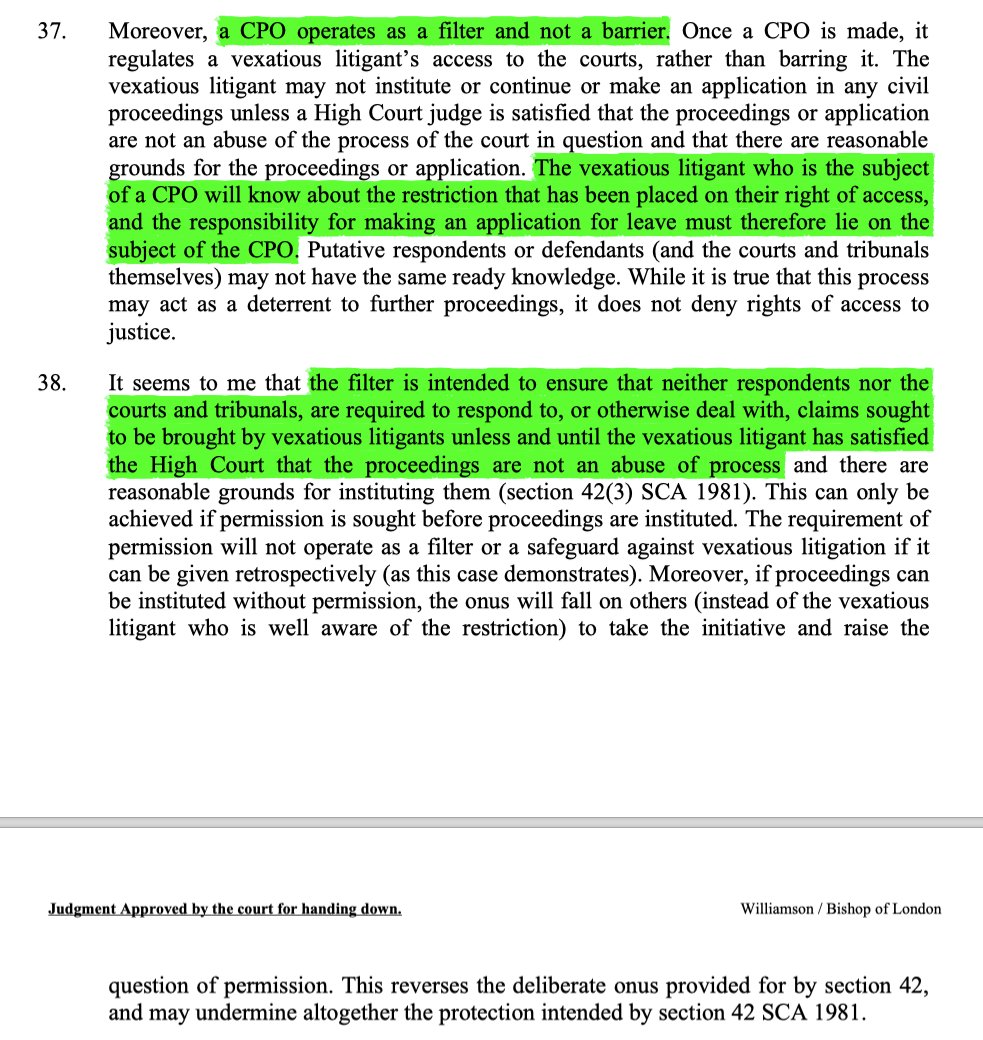🧵Williamson v Bishop of London: CA holds that where someone has a civil proceedings order (CPO) against them, an ET claim will be a nullity if issued before seeking the required High Court permission to issue.
bailii.org/ew/cases/EWCA/…
#ukemplaw
bailii.org/ew/cases/EWCA/…
#ukemplaw
2/ Since 1997, W has been subject to a CPO under s.42(1A) SCA. Under the CPO he can't start civil proceedings in any court or tribunal without leave from the High Court, having satisfied that court the proceedings aren't an abuse of process. 



3/ In 2019, W presented an ET1 alleging age discrimination re termination of his tenure as Priest-in-Charge of a parish when he reached 70. W failed to obtain High Court permission before presenting the claim. In defending the claim, BoL asserted the claim was a nullity.
4/ 5 months later, W belatedly sought High Court permission. The HCJ was satisfied W's claim wasn't an abuse of process, & made orders (in the alternative) that W either be given permission to pursue the claim already brought or otherwise to bring a claim re his termination. 

5/ At a PH, an EJ found W's ET claim to be a nullity & hence there was nothing to which para 1 of the HC order could attach. The EAT dismissed an appeal against this decision, holding the CPO was a substantive barrier to bringing proceedings.
6/ The question for the CA was whether W's claim brought without HC permission was a nullity or was merely stayed unless HC leave was granted.
7/ The CA hadn't ever considered this question previously. In Seal v South Wales Police, the HL found that under the similar s.139(2) of the Mental Health Act 1983, proceedings issued before permission were a nullity. In AG v Edwards, the Admin Ct held likewise re s.42(1A) SCA.
8/ The CA found W's claim a nullity. It noted s.42(1A) doesn't provide for retrospective continuation of proceedings started without permission. The section was directed to the mischief of avoiding court time on unjustified vexatious litigation & protecting prospective defendants 



9/ The CA noted also a CPO is a filter rather than a barrier, with the vexatious litigant being responsible for applying for leave to bring a claim. That filter ensures respondents & courts aren't troubled by a CPO-recipient's claim unless the HC gives permission. 



10/ The vexatious litigant isn't deprived of access to justice by proceedings being a nullity if a claim is brought without seeking permission 1st. The vexatious litigant knows what to do & there's time to seek permission, even with a short limitation period as under the EqA. 

• • •
Missing some Tweet in this thread? You can try to
force a refresh

 Read on Twitter
Read on Twitter










